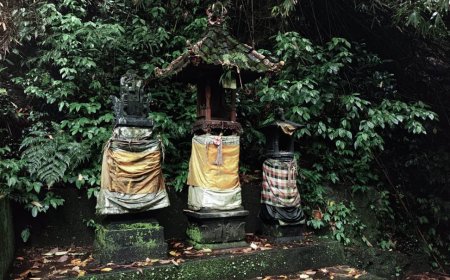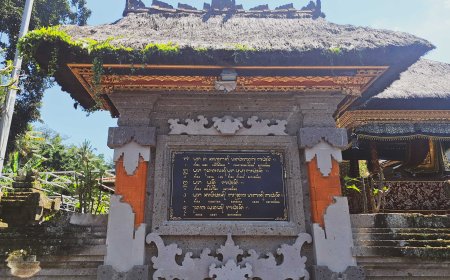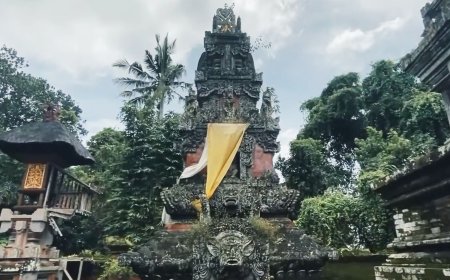Kayu Selem temple: The Ancestral Temple of Pasek Kayuan Located in Songan Village
Kayu Selem Temple, located in Bali, Indonesia, is a place of worship rich in history and culture. Established in the 16th century by Hindu priests from Java, this temple is known for its enchanting architecture and intricate ornaments. The name "Kayu Selem" means "peace," reflecting its function as a spiritual and social center for the local community. Ceremonies such as odalan and various religious rituals are often held here, attracting many visitors who wish to experience the beauty and tranquility of Balinese culture.
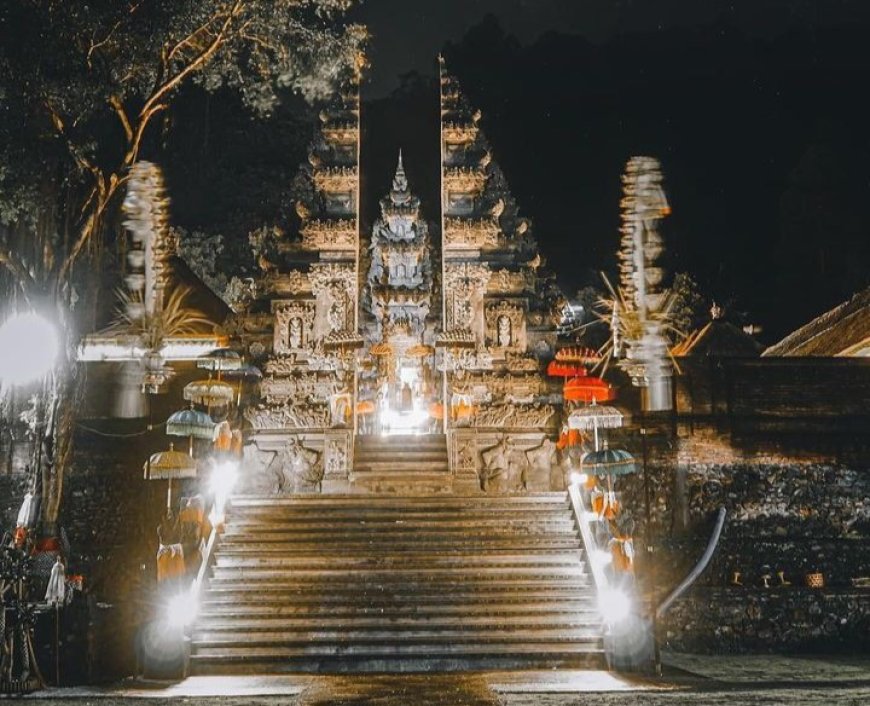
The story begins with the spiritual journey of Mpu Semeru, a revered figure known for his wisdom and profound understanding of the secrets of nature and spirituality. During his journey to the island of Bali, Mpu Semeru traverses beautiful mountains, witnessing breathtaking natural landscapes and feeling the refreshing purity of the mountain air. Upon arriving at Kuntulgading (Kedisan), he is captivated by the beauty and tranquility of the surrounding nature, where the sound of birds chirping and the gentle breeze create a peaceful and calming atmosphere. After resting for a while, he continues his journey to the area of Tampurhyang (Songan), where he discovers a sacred spring radiating an aura of serenity. Near the spring, he sees a tamarind post (celagi) that appears blackened and burned, sensing the spiritual power within it, as if it were inviting him to interact and contemplate the meaning of life
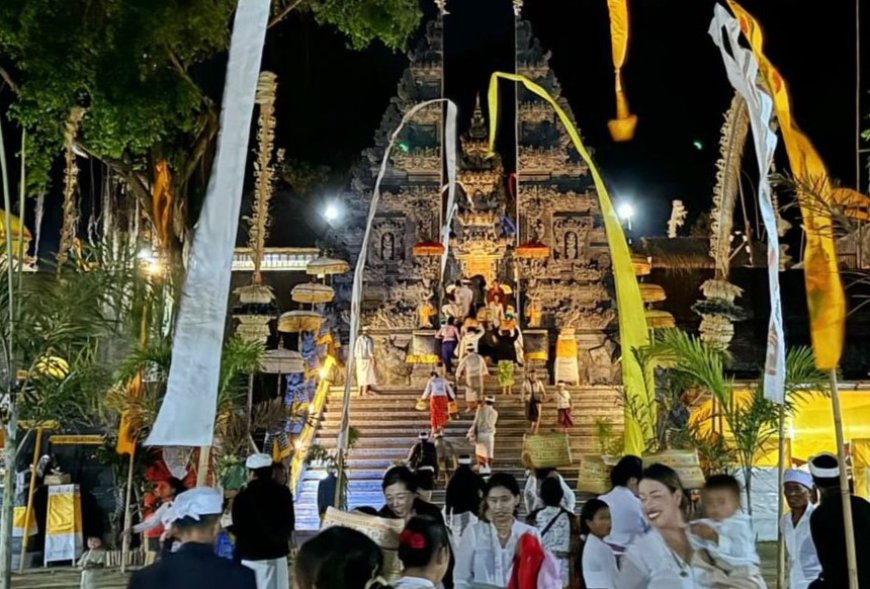
Atmosphere of Evening Prayers at Pura Kayu Selem (Source of Photo: Personal Collection)
With the strength of his teachings and panca bhayunya, Mpu Semeru transforms the wooden post into a human being known as Mpu Dryakah. This transformation not only showcases magical ability but also symbolizes the latent potential within every living being. Mpu Dryakah, who later changes his name to Mpu Kamareka after receiving teachings from Mpu Semeru, is entrusted with an important mission to meet Bhatara Hyang Putrajaya at Pura Besakih and Bhatara Hyang Gnijaya at Gunung Lempuyang. This task is not merely a ritual; it is a sacred mission to maintain a spiritual connection with the deities and to disseminate the teachings and traditions that have been passed down. Mpu Semeru then returns to Java, but he feels a strong calling to return to Tampurhyang on the day of Jum’at Keliwon wara Pujut, where he is warmly welcomed by Mpu Kamareka and his wife, who have greatly missed his presence.
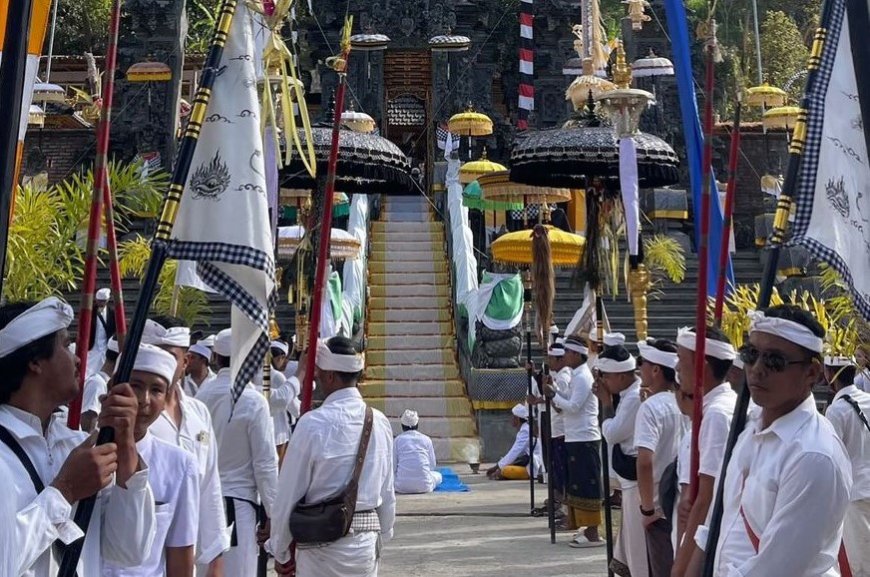
The Atmosphere of Worship at Pura Kayu Selem (Source of Photo: Private Collection)
During this meaningful visit, Mpu Semeru imparts a crucial mandate to Mpu Kamareka regarding the preservation of Sanghyang Ongkara Dyatmika, a teaching that emphasizes the importance of maintaining balance between the physical and spiritual realms. He stresses the significance of staying connected to the ancestors and transmitting spiritual teachings to the descendants of Mpu Kamareka, who will be known as Arya Pasek Kayu Selem. This mandate encompasses the responsibility to teach noble values to future generations so that the cultural and spiritual heritage is not lost to time. After Mpu Kamareka passes away, the respected religious traditions continue, demonstrating that the teachings handed down remain alive in the hearts of their followers. During his cremation ceremony, the seven sons of Mpu Gnijaya, known as Sang Sapta Rsi, are invited to perform rituals, creating a strong spiritual bond between the two lineages and underscoring the importance of collaboration in preserving the traditions that have been bequeathed.
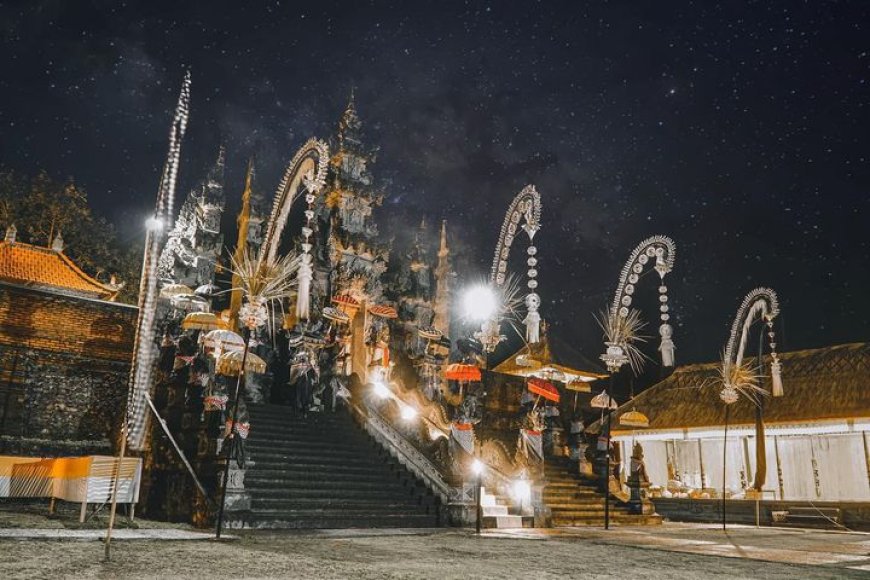
The Beauty of Pura Kayu Selem at Night (Source of Photo: Personal Collection)
As time goes by, Mpu Kamareka becomes the progenitor of the Pasek Kayu Selem community, which includes notable names like Ki Kayuselem, Ki Celagi, Ki Tarunyan, and Ki Kayuan. Each generation of this lineage strives to continue the teachings and traditions that have been passed down, safeguarding their spiritual heritage as part of their identity. Every name and story handed down serves as a reminder of the long journey undertaken by their ancestors. Pura Kayu Selem, a silent witness to this journey, now serves not only as a place of worship but also as a symbol of reverence for the ancestors and a reminder of the importance of preserving the legacy left behind.
Every year, devotees gather at Pura Kayu Selem to perform rituals and celebrations, accompanied by various offerings and prayers. This activity fosters a solemn atmosphere that connects the community with their spirituality. The events aim not only to honor the ancestors but also to strengthen bonds among community members and nurture a sense of unity. Through each ritual, every prayer, and every ceremony, the stories of Mpu Semeru and Mpu Kamareka live on in the memory of the people of Bali, inspiring generations to honor and preserve the noble values that have been inherited. Thus, Pura Kayu Selem and the tales behind it continue to inspire the community to spread love, wisdom, and harmony in their daily lives. Through the preservation of these traditions, the people of Bali not only safeguard their cultural heritage but also reinforce the spiritual identity that has been built over centuries, making this story timeless and relevant even today.




















































